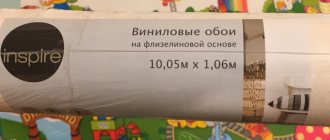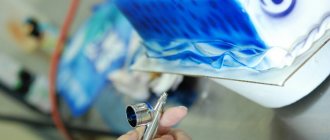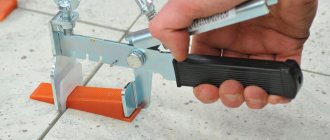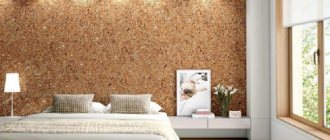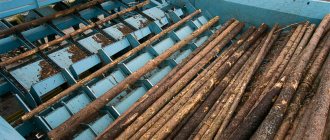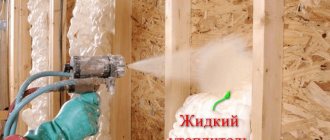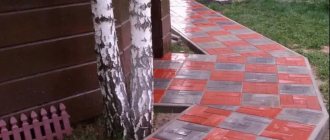The material addresses the question of what an acrylic bathtub is. Pros and cons, customer reviews and design solutions are presented on the pages of the article. In addition, here you will find the following information:
- acrylic as a bath material;
- advantages and disadvantages;
- comparison with cast iron and steel products;
- reviews of popular models.
Acrylic - what kind of material is it?
An acrylic bathtub is a composite product with a layered structure made from acrylic resins. The part that comes into contact with water and skin is transparent plastic. The color is given to it by a special powder that is included in liquid polymethyl methacrylate even before the polymerization stage.
Acrylic for bathrooms is called “plumbing”, and its composition includes substances that prevent the growth of bacteria.
Basic properties:
- plasticity - under the influence of heat, the material changes;
- durability – protection against fading;
- low porosity - dirt and bacteria do not linger on the walls of the bathtub;
- simplified restoration - defects are masked using homemade artisanal methods.
Physical characteristics of acrylic
In the production of bathtubs, sheets of two materials are used, differing in thickness and manufacturing method:
- “Pure acrylic” (cast). The compound (polymer resin) is poured into a sealed mold between the glasses and polymerized in a steam oven. This substance is hard and wear-resistant.
- Double layer plastic. It is made by combining melts of cast acrylic and acrylonitrile butadiene styrene (ABS).
The structure of the acrylic bathtub has two surfaces. On the one hand it is impact-resistant, on the other it is glossy and smooth.
Plumbing fixtures are made from “pure” acrylic after going through four mandatory operations:
- Forming - heating the sheet and stretching it to the size of the workpiece;
- Reinforcement – coating the back side of acrylic with a composite layer;
- Trimming – removing excess plastic;
- Assembly - installation of the workpiece on the load frame and polishing it.
There is a separate type of two-component sheet. Plus: cheap. Disadvantage: worse quality - the required hardness of the coating is missing, the design may be unreliable.
When choosing an acrylic bathtub, make sure that the thickness of the polymer used is less than 5-6 mm. The higher this indicator, the more durable and durable the model.
Effect on the human body
Among the manufacturing methods, there is a method in which styrene is added to the raw material (necessary for reinforcement). The material is inexpensive, but contains toxic substances that evaporate over time and accumulate in the human body. Warm water enhances the richness of the vapor.
Styrene has a negative effect on the body and causes poisoning. We strongly recommend that you check with sales consultants about its presence/absence in the structure.
Most coatings for acrylic bathtubs are eco-friendly and hygienic . The smoothness of the walls ensures that bacteria and microorganisms are effectively washed away - they do not have time to multiply.
Care and operation
The advantages and disadvantages of acrylic bathtubs allow them to be successfully used everywhere. During operation, the question of acceptable and contraindicated surface cleaning methods arises.
- Abrasive substances are contraindicated - they damage the surface, like brushes with coarse bristles. Sponges made from delicate materials are welcome.
- Use liquid acrylic surface care products. To restore the shine of the surface, use a soft cloth previously soaked in a special cleaner for acrylic bathtubs.
If, despite the precautions, scratches begin to appear on the surface, smooth them out with fine sandpaper. Then polish with detergent - there will be no trace of defects left.
Due to poor water quality, water stone forms on the walls of the bathtub. The problem is solved with citric acid (or 7% vinegar solution). It takes one pack of acid or one and a half liters of vinegar to remove limescale.
Popular cleaning products
- Acrilan;
- Cif;
- Bass;
- Acrylic Polish;
- Mr. Chister.
Wear rubber gloves when using surface cleaning products. Ventilate the bathroom after such procedures.
Ways to get out of the situation
First, it is necessary to clarify that shortening the bathtub is radical, but not the only way to solve the problem. It's worth thinking about the following points.
If you have saved the documents for the product, you can always exchange it in the store for a suitable one . True, this may be associated with some inconveniences: paying for movers and transportation to the place of purchase, although it will be the best decision. Unfortunately, the required product is not always in stock, so you should take a closer look at the following method.
Make a groove in the wall for the bathtub . An excellent way out of the situation, the bathtub along the side will receive additional support, and the structure will become much more rigid. But this method is very dirty, and is only possible if the tiles have not yet been laid, because cutting laid ceramics is a big risk. A load-bearing wall can also become an obstacle; making horizontal grooves in it is strictly prohibited .
If the methods described above do not work for you, there is nothing left to do but cut the bathtub. We will look at how to do this correctly and with less losses below.
Acrylic bath: pros and cons
The section presents the features of acrylic bathtubs. The pros and cons are conveniently structured and indicate the features and characteristics of this type of product.
Advantages
What is good about acrylic bathtub coating? Based on reviews and well-known facts, we have compiled the following list:
- lightness of the material - the bathtub, unlike cast iron prototypes, is practically weightless;
- variety of shapes and sizes – retail outlets offer a wide range of products;
- bright colors – acrylic does not fade;
- heat-insulating properties – baths retain heat for a long time;
- antibacterial surface properties;
- ease of care.
Be sure to inspect the surface of the bathtub when purchasing: it should have a slight glossy shine, and the surface should be smooth, without pores or roughness.
Flaws
Let us note the disadvantages of an acrylic bathtub. Reviews from real people contain critical phrases on the following points:
- the material is susceptible to damage, careful use is required;
- inability to use chlorine-containing substances for cleaning.
Underwater rocks
What to do after the cutting work has been carried out and how to protect yourself from possible negative consequences?
- Due to a decrease in the rigidity of the edge on the side of the cut, during operation there may be some violation of the geometry of the bathtub, what experts call “led”. Experienced craftsmen advise in this case to install the bathtub not on standard legs , but on a solid frame .
- You can restore the necessary stiffness to the edge using the fiberglass and epoxy bumper repair kit mentioned above. It is necessary to glue it not the cut, but the inner surface of the bend of the edge of the bathtub, by 1-2 centimeters. This will help provide additional edge support.
- You can attach an aluminum profile or a wooden block to the wall, from the undercut side. The side of the bathtub will rest on them. This will ensure increased rigidity of the entire structure.
It is worth remembering that shortening the bathtub will void the warranty. But, unfortunately, nothing can be done about this.
Cast iron, steel and acrylic bathtubs - comparative table of characteristics
| Characteristic | Cast iron | Steel | Acrylic |
| Ease | Heavy | Heavy | Lungs |
| Noisiness | Noisy | Extremely noisy | Almost silent |
| Design variety | Variety of domestic models | Unpretentious appearance | A wide range of |
| Price | Average | Low | Average |
| Enamel strength | Small | High | Average |
| Thermal insulation | Average | Small | High |
What should the thickness be?
The durability, wear resistance and service life of the model are affected by the thickness of the outer acrylic layer. Depending on the brand, it ranges from 2 to 6.5 mm.
The wall thickness of expensive and high-quality bathtubs is approximately 6 to 8 millimeters. Low-grade and budget products have acrylic walls with a thickness of 2 to 5 millimeters.
Often, in order to strengthen the thickness of the walls and base, the back of the bathtub is covered with a reinforcing layer such as extruded acrylic or reinforcing material.
Fiberglass is used in the manufacture of the lower reinforcing layer. If it is sufficiently thick, the product becomes rigid, strong, is not subject to deformation under the weight of a person and is not afraid of falling heavy objects.
Determining the thickness of the reinforcement is possible only visually from the end part of the acrylic bathtub. If you have doubts about the reliability of the design, you can lightly press the central part of the bowl with your hand. A good material should be elastic and not bend
Brand overview
TRITON : Russian company working with Austrian acrylic sheet “SENOSAN” (4 mm thick). Antibacterial coating “ANTIBAK” is used.
- Advantages: ease of cleaning, long-term heat retention and silent filling with water. The models have non-standard sizes, which allows them to be placed in a designer bathroom.
- Disadvantages - wears out quickly, gets scratched. If you accidentally drop pumice on the surface, there is a risk of leaving marks.
Triston
ROCA : a Spanish company specializing in the production of inexpensive and elegant models.
- Advantages – can withstand up to two years of use in its original form. It is very mobile, its small size makes it easy to transport if you move.
- Disadvantages - since the bathtub is covered with an anti-slip coating, the surface appears dirty.
Roca
RADOMIR : Russian manufacturer using premium Austrian acrylic from Senoplast and European fittings.
- Advantages - the bath is stable, its assembly is neat. There are no glue or silicone stains on the seams. The hydromassage engine is installed on rubber shock absorbers, therefore it practically does not vibrate. There is a protective device against power surges.
- Disadvantages - high price.
Radomir
KOLO : Polish company practicing unusual product design. Any bathtubs are on sale: corner, sector-shaped, barrier-free.
- Advantages: Seven-year warranty on all products. The models are designed to meet the needs of different population groups.
- Disadvantages - not noticed.
Kolo
JACOB DELAFON : French manufacturers of elegant bathtubs are successfully experimenting with Flight material.
- Advantages: ease of bathing and mobility. Coating with antibacterial properties.
- Disadvantages - delicate coating, the bathtub quickly becomes covered with scratches.
Jacob Delafon
How to decide on the manufacturer
Among the Russian, largest and most advanced manufacturers of acrylic bathtubs, the products of Bell Rado, Doctor Jet, Aquatek, Radomir stand out, this also includes the products of the Russian-German company Aquatika. Each of these manufacturers is considered the largest, for this reason, in pursuit of status and prestige, each of these manufacturers tries to produce only high-quality plumbing fixtures. On average, an acrylic bathtub produced in Russia costs from 45,000 rubles to 75,000 rubles.
Among foreign manufacturers, priority in quality, and how could it be without this, Germany and Italy hold the palm in prices. These are plumbing fixtures from companies such as Sunrans, GNT (Germany) and Artceram, BelBagno, Novellini Elysium (Italy). The quality of acrylic bathtubs is very high, but the average price starts from 55,000 rubles and can reach up to 200,000 rubles.
With more reasonable prices and fairly high-quality products, plumbing fixtures from Czech, Polish, and Spanish manufacturers are represented on the Russian market. Among Czech products, the most popular brand is Ravak. The price segment of plumbing fixtures from these countries has a very wide range from 7,000 rubles to 50,000 rubles, depending on the specific model and its functionality.
A very simple and cheap acrylic bathtub can be purchased from manufacturers in China or Turkey. Of course, they also have brands, for example, Eago (Hong Kong), but if you take an estimate of the models that are presented on the market, you can come to the conclusion that for 6,000 - 30,000 rubles, it is quite possible to purchase plumbing fixtures.
Photos in the interior
What strength is suitable?
Acrylic bowls have low strength because they are made of flexible and pliable plastic. To strengthen, a reinforcing layer with epoxy is applied to the outside. The more layers of reinforcement, the stronger the acrylic bathtub becomes.
Polyester resins strengthen the acrylic sheet. In order to make the structure even more durable, it is appropriate to use a reinforcing metal frame and bottom or reinforced chipboard. Due to its light weight, this plumbing fixture allows for simplified transportation, installation and dismantling during repairs. The weight of the bath is thirty kilograms, and the cast iron product weighs 80-150 kg.
What additional options should I take?
Due to the auxiliary parameters, acrylic bathtubs make taking water procedures pleasant and comfortable. To increase comfort while swimming, almost all plumbing fixtures are equipped with headrests, stands or armrests.
The most popular and healthy addition is the Jacuzzi model. In addition to the usual properties characteristic of an acrylic bathtub, the jacuzzi is equipped with hydromassage, which is a relaxing and healing procedure for the human body. A similar hydromassage effect occurs when air is mixed with water jets supplied through the nozzles. By turning the nozzles the direction of the jets changes. These sprayers can be located on the sides or built into the bottom of the bowl.
Another option that children will especially enjoy is air massage. Water jets mix with directed air currents, resulting in the formation of bubbles on the surface.
There is also chromotherapy. Using this function, directional lighting colors the water jets in certain shades, which, in combination with hydromassage, helps to enhance the beneficial effect on the human body.
Modern acrylic models are equipped with elements such as game consoles or radios. The system is controlled by a hydraulic switch or control panel. Plumbing fixtures with a special shelf for a laptop or a product with an integrated panel with a plasma TV are common. The jacuzzi has Wi-Fi or a direct connection to the central smart home system. These acrylic bathtubs meet any preferences and requirements.
Repair
In case of minor damage to the surface during operation, the surface can be repaired without special costs.
What is needed for repair:
- Find out how the acrylic is made; the method of repair depends on this.
- To eliminate scratches on the casting surface, it will be enough to use polishing, as a result of which the visible defect will be eliminated.
- To repair extruded material, additional costs will be required for the purchase of liquid acrylic, which can even be used to remove nicks.
